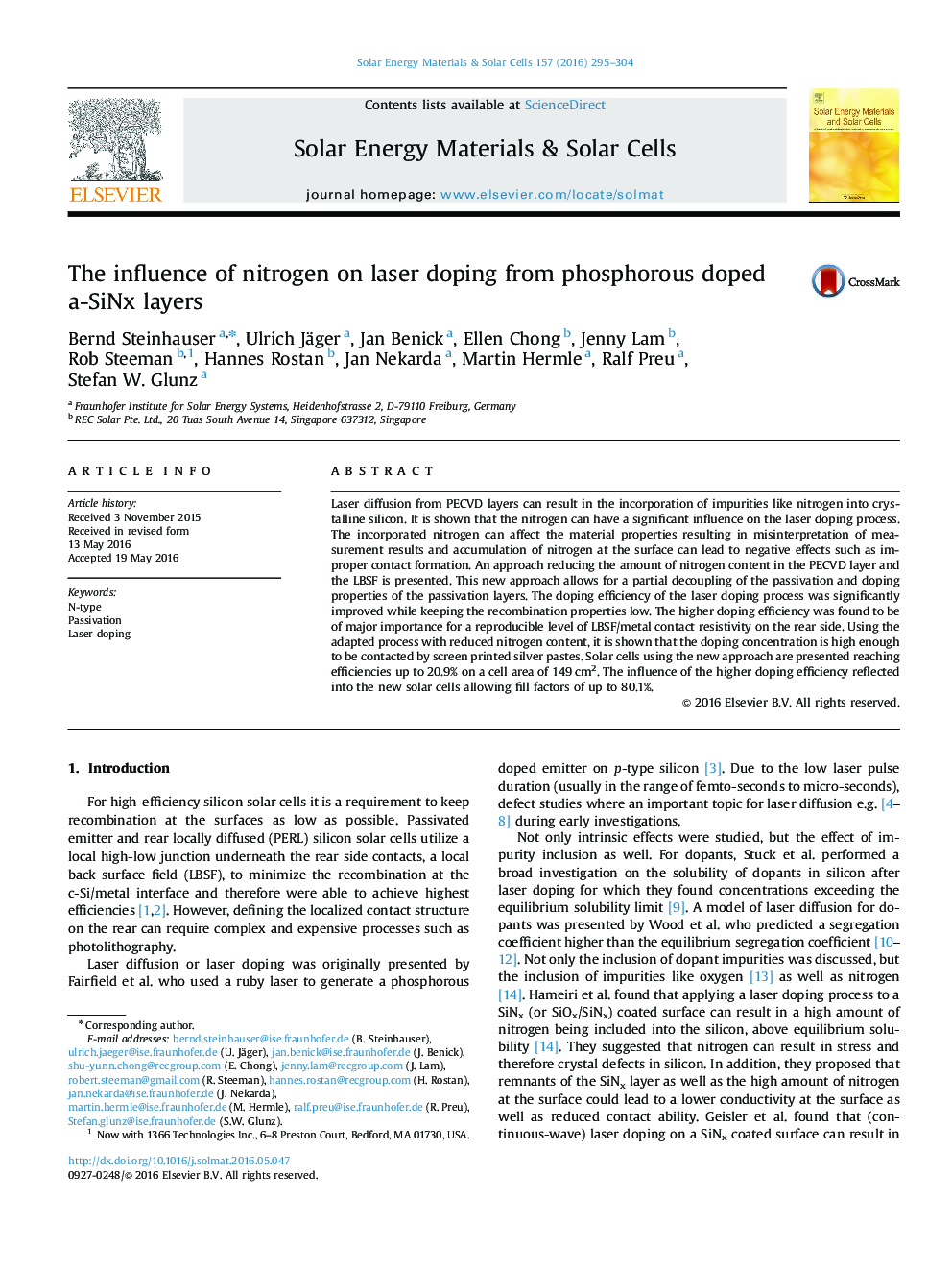| Article ID | Journal | Published Year | Pages | File Type |
|---|---|---|---|---|
| 6534581 | Solar Energy Materials and Solar Cells | 2016 | 10 Pages |
Abstract
Laser diffusion from PECVD layers can result in the incorporation of impurities like nitrogen into crystalline silicon. It is shown that the nitrogen can have a significant influence on the laser doping process. The incorporated nitrogen can affect the material properties resulting in misinterpretation of measurement results and accumulation of nitrogen at the surface can lead to negative effects such as improper contact formation. An approach reducing the amount of nitrogen content in the PECVD layer and the LBSF is presented. This new approach allows for a partial decoupling of the passivation and doping properties of the passivation layers. The doping efficiency of the laser doping process was significantly improved while keeping the recombination properties low. The higher doping efficiency was found to be of major importance for a reproducible level of LBSF/metal contact resistivity on the rear side. Using the adapted process with reduced nitrogen content, it is shown that the doping concentration is high enough to be contacted by screen printed silver pastes. Solar cells using the new approach are presented reaching efficiencies up to 20.9% on a cell area of 149Â cm2. The influence of the higher doping efficiency reflected into the new solar cells allowing fill factors of up to 80.1%.
Keywords
Related Topics
Physical Sciences and Engineering
Chemical Engineering
Catalysis
Authors
Bernd Steinhauser, Ulrich Jäger, Jan Benick, Ellen Chong, Jenny Lam, Rob Steeman, Hannes Rostan, Jan Nekarda, Martin Hermle, Ralf Preu, Stefan W. Glunz,
